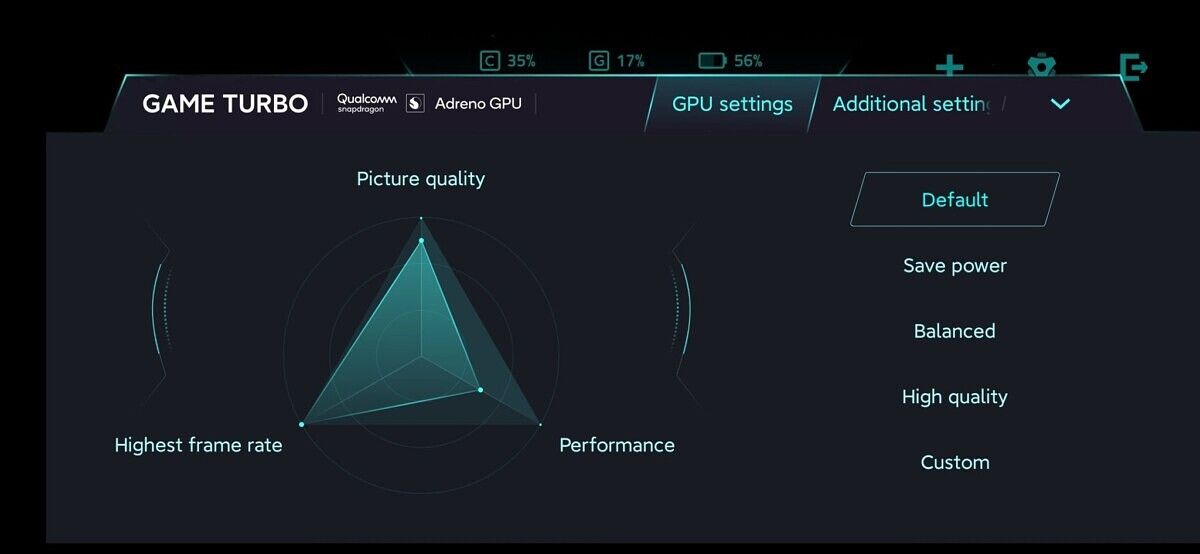Update 1 (08/03/2020 @ 05:00 PM ET): We can now corroborate the existence of these new GPU tuning features in Xiaomi's Game Turbo. Scroll to the bottom for more information. The article as published on July 30, 2020, is preserved below.
Smartphones are getting more and more powerful, and as a result, mobile games are becoming more and more demanding. Games such as Fortnite, PUBG, and Call of Duty are available on mobile, for example, and the highest quality settings in these games can really push the GPU of modern devices. Dedicated gaming smartphones like the ASUS ROG Phone 3 push the envelope with killer specifications that can handle every game you throw at them, and they also usually have special gaming modes that let you fine-tune performance settings. But gaming smartphones aren't the only devices with top-tier mobile processing power, and they're also not the only devices to have dedicated gaming modes. Several Xiaomi phones have had a game tuning feature called Game Turbo for some time now, but with the upcoming Mi 10 Pro+, Xiaomi is allegedly collaborating with Qualcomm to introduce a much more powerful iteration of the software.
This news comes to us courtesy of leaker Ice Universe on Twitter. According to the information they published, Xiaomi and Qualcomm's new "Game Turbo" feature will be included in the Xiaomi Mi 10 Pro+, which is expected to be an upgraded version of the Xiaomi Mi 10 Pro but with Qualcomm's new Snapdragon 865 Plus and possibly other enhancements. The new features will allow you to tweak the phone's Adreno GPU in a way that usually isn't available on most smartphones with Qualcomm Snapdragon chips. You can choose between a set of premade profiles if you want to prioritize either performance/battery life or graphics quality. You can also choose a "custom" profile that allows you to manually tweak parameters such as the anti-aliasing, anisotropic filtering, and texture filtering levels. This way you can choose how your games look according to your needs: whether you want the absolute best graphics, a balance between performance and battery life, or the longest possible playtime.
Game Turbo GPU tuning settings allegedly on the Xiaomi Mi 10 Pro+. Credits: Ice Universe on Twitter.
Frequent Xiaomi tipster kacskrz told us he could not find evidence for this feature in the latest MIUI 12 beta builds, so take this leak with a small grain of salt. However, Ice Universe has a solid track record when it comes to smartphone news from Samsung as well as many Chinese brands, so we're inclined to believe this is real. We, however, don't know whether this feature will be rolling out to other devices such as the rest of the Mi 10 lineup once the Mi 10 Pro+ is released. We also don't know if this feature will be available on other devices with the Qualcomm Snapdragon 865 or Snapdragon chipset in general. We reached out to Qualcomm to find out the extent of their involvement, whether they can confirm this news, and whether this feature will be made available for other Snapdragon devices, but a spokesperson told us the company doesn't comment on speculation.
According to the latest rumors, the Xiaomi Mi 10 Pro+ is launching next month with a 120Hz refresh rate display, a 108MP main camera, and a Qualcomm Snapdragon 865 Plus processor. We don't have information regarding the exact launch date or availability, but we will likely learn more about this device in the coming weeks. The device will likely be announced in China first given that all the news so far has come from leakers on Weibo, but it's possible the device will launch globally much like the rest of the Mi 10 series.
Update 1: Corroboration
XDA Member and frequent Xiaomi tipster kacskrz informed us that the latest system service plugin app in MIUI 12 20.8.3 beta has added the strings for these new GPU tuning features. We checked the APK and can confirm the strings are present, thus corroborating the existence of these new features in Xiaomi's Game Turbo. However, we still cannot confirm the extent of Qualcomm's participation in the development of this feature nor whether or not this feature will become available to other devices with Adreno GPUs.

